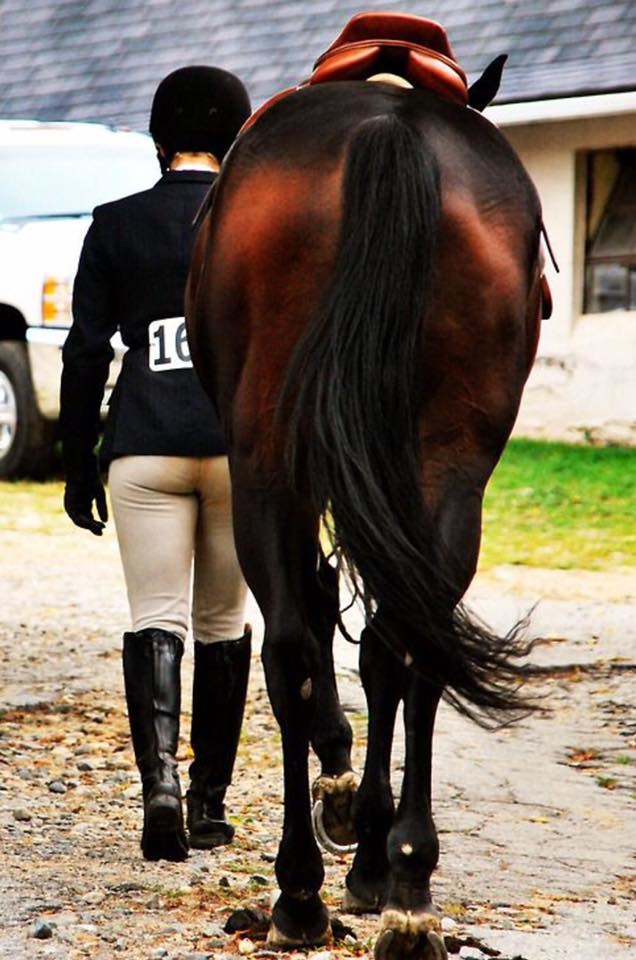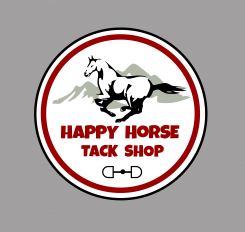Eventing Attire and Tack Rules
- Posted on
- By Happy Horse
- 0

Show season is upon us! Make sure you are ready with an up-to-date and rule appropriate wardrobe. We know navigating show rules can be tricky for first time showers or someone rejoining after some time off, so we are here to help make things easier and less stressful on you. Below we will outline the basics to get you ready, and our knowledgeable staff are always happy to help you make the right choices in person, by phone or by email! When in doubt though we always recommend checking with your trainer first since some trainers will have specific preferences and standards.
Apparel:
Helmets - All riders must wear a properly fitted helmet when mounted that meets or exceeds ASTM/SEI standards. Harnesses must be attached and properly fitted. Any color helmets are allowed but no or tasteful and discreet accents are recommended for dressage.
Coat - For dressage a dark color or tweed jacket is required. It should be well fitted and needs to be fully buttoned. In higher levels tailcoats are permitted but not in lower levels. For jumping any full colored coats are acceptable. It should be well fitted and needs to be fully buttoned. In some of the lower levels, a coat may be waved at times and riders will just need to have a nice collared shirt, with no neckwear, tucked in.
Shirts - For dressage a light or white color shirt is required, with a collar, stock pin and tie or choker. For jumping any color shirt is permitted with a stock pin and tie or choker. For cross country a long sleeved shirt is required. Any colors or patterns are acceptable.
Breeches - A light color, tan or, white breech is required for the dressage and jumping rings. White breeches are most common. They should be clean and well fitted. Breeches are required for cross country but can be any color.
Boots - For all three tests a tall leather boot or paddock boot and leather half chap that are the same color are allowed. Laces should match the boot color. All boots must have a heel. Boots should be clean and polished.
Gloves - Gloves are not required but if worn should be dark colored, beige, tan or white for dressage and jumping. Gloves can be any color for cross country.
Spurs - Spurs are not required. If you choose to wear a spur it must be made of smooth metal, cannot have a shank longer than 4cm and must point only towards the rear. Rowels must be round and smooth. Rowels with tines are not allowed and neither are flat disks.
Whip - A whip can be carried, for dressage it needs to be no longer than 120cm/47.2” including the lash. For jumping and cross country it must be no longer than 75cm/30” including lash, and cannot be weighted. Adjustable length whips are not permitted.
Safety Vest - For cross country a body-protecting vest that meets or exceeds ASTM/SEI standards is required. Inflatable vests are permitted but only if worn over a body-protecting vest.
Medical Card - For cross country an approved and complete medical card is required. It must be securely attached to the riders upper arm in a transparent, waterproof carrier, and must be visible.
Tack:
Saddles - Any English saddle can be used for all of the tests. Traditionally a black dressage saddle is used for the dressage test and a brown all purpose or jumping saddle is used for jumping and cross country. However, there is no rule as to what saddle can be used in which event, and it can be based on competitor and horse comfort. Make sure your saddle is well fitted and clean!
Pad - For your dressage test you should use a white dressage pad. The pad should not have any bling, piping or logos on it. For jumping and cross country you can use any pad of any color. Traditionally you would want a jumping pad for the jumping ring and a cross country, or pad with some grip, for the cross country course.
Bridle - Most bridles are permitted but should be well fitted, not have extra attachments, be made of leather, and bits must connect to the rein and bridle. Your bridle should be the same color as your saddle. Bridles worn during cross country must have a throat latch. Cavessons, figure eights, drop nosebands, nosebands with a flash, Micklems, combined bridles, Stotzem and Monarch bridles are allowed in all three tests. Double bridles are allowed in jumping and cross country but only in upper level dressage. Nosebands may not be tightened to cause harm and may not interfere with breathing. Micklem bit clips are not allowed in dressage. Blinkers/blinders are only permitted in jumping. Tongue straps are not allowed in any tests. Hackamores are allowed in jumping and cross country but not in dressage.
Reins - Reins may not have any loops or hand attachments. They must attach directly to the bit and/or bridle.
Breastplate/martingale - Breastplate are allowed for dressage but martingales are not. Running martingales with rein stops or Irish martingales are allowed for cross country.
Neck Strap - Loose neck straps are not allowed in dressage or cross country, but may be used in jumping.
Bits - For Dressage the minimum diameter of the bit needs to be 14mm. For cross country the lever arm may not exceed 10cm. Additions to the bit including any wrapping materials besides latex are not permitted in any test. Bit guards are permitted for cross country and show jumping but not dressage. Gags attached to the bridle and bit are permitted in cross country and jumping but not in dressage. Gags that go under the chin and do not attach to the bridle are not permitted. Tongue plates, center control plates, rolling pieces on the bits and bits with more than two joints are not permitted in dressage but are permitted in jumping and cross country. Wavy bits, barrel jointed bits, bits with center roller pieces, hanging cheeks, tilted mouth pieces, Weymouths and double jointed bits are all allowed in all three tests. If you have additional questions about bits please refer to the rule book.
Stirrups - Stirrups must allow immediate separation of the boot from the stirrup in case of a fall. Stirrups that are not permitted include safety stirrups, stirrups with magnetic strips, and K’Vall stirrups. For dressage toe cages are not permitted and for cross country only permitted if made of a soft collapsible material.
Leg wear - You cannot have anything on your horses legs for your dressage test. You can use polos, tendon boots, brushing boots or cross country boots for your jumping and cross country tests.
Fly Veil - Fly veils are permitted in all three areas. They should be discreet in color and design. They cannot cover the horses eyes and may not be attached to the bridle. Ear plugs can only be used for your jumping test.

Comments
Be the first to comment...